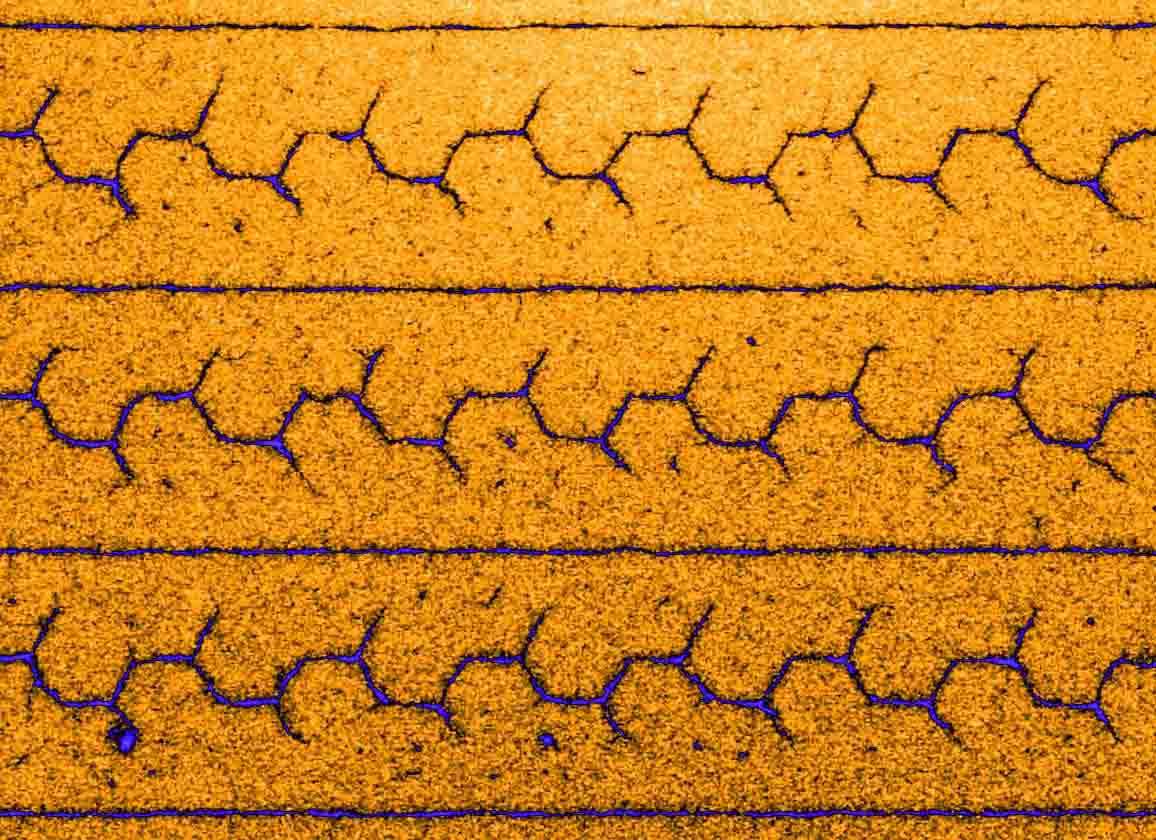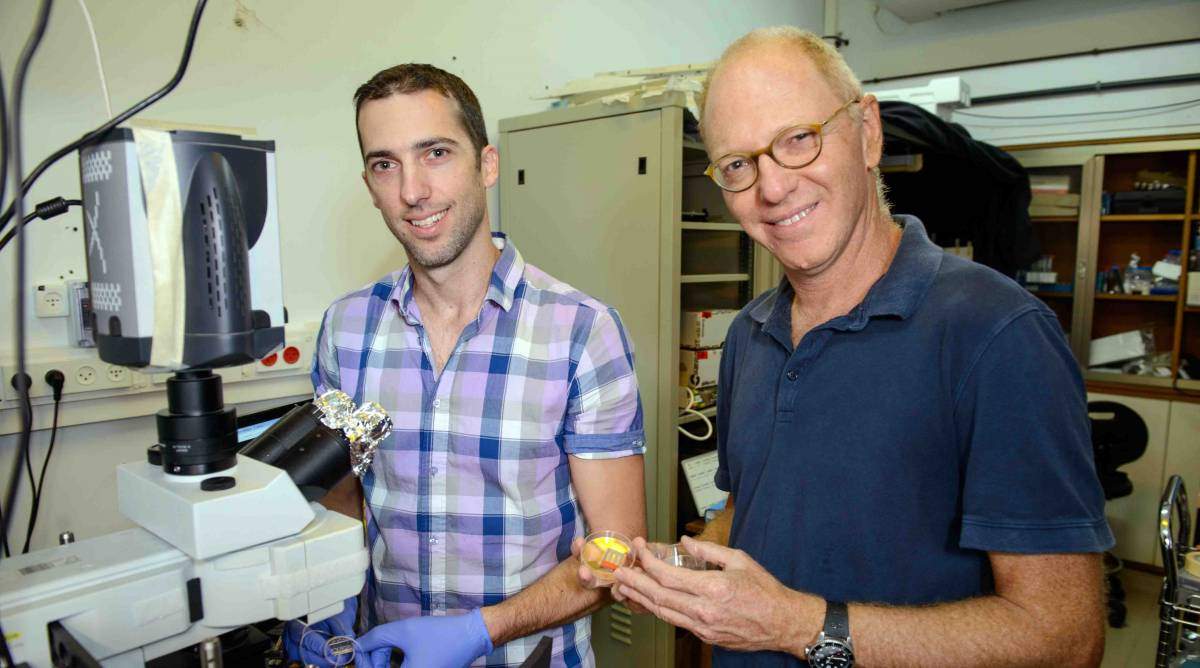Lines of highly compacted DNA might be used as nanocables

DNA molecules take on different shapes and forms within living cells; sometimes it is a highly compacted, condensed structure. In such condensed states, DNA has interesting chemical and physical properties, though these cannot yet be controlled and manipulated. Researchers have recently been looking for ways to shape condensed DNA and thus they try, for example, to align DNA molecules one after the other along a very narrow strip. What would happen if those aligned DNAs were then to undergo condensation and collapse into that highly compacted state? This question was recently investigated by scientists of the Weizmann Institute of Science’s Materials and Interfaces Department, in collaboration with a research team at the Technical University of Munich, Germany.
The research, recently published in Nature Nanotechnology, was led by Dr. Dan Bracha, a postdoctoral fellow in the lab of the Weizmann Institute’s Prof. Roy Bar-Ziv, and doctoral fellow Günther Pardatscher in the lab of Prof. Friedrich Simmel of the Technical University of Munich. Also contributing to the study were doctoral fellow Ohad Vonshak and staff scientist Dr. Shirley Shulman Daube.

In an earlier study, Bracha and Bar-Ziv developed a method for condensing a dense layer of DNA molecules bound to a surface, thus creating thin “carpets” of entangled DNA. Normally, DNA molecules repel one another due to their negative charges, but the scientists were able to circumvent this by adding to the solution an agent that has multiple positive charges. “The result of this process was the collapse of DNA molecules onto one another in an uncontrolled manner, forming a thin two-dimensional film of DNA,” says Bar-Ziv.
In the present study, the scientists managed to guide the DNA molecules to bind to a surface along extremely thin lines – on the scale of a few tens of nanometers (one billionth of a meter) – “written” on the surface by an electron beam. The scientists then successfully condensed the DNA molecules along these nanoscale one-dimensional lines, creating nanocables that grew dynamically – something that scientists had not previously been able to achieve. “The process of the DNA molecules falling along a predefined path can be compared to a domino cascade falling at a constant rate. The result is the creation of a novel supramolecular material with properties distinct from those of single DNA molecules.”
“The significance of the discovery,” says Bracha, “is that it has allowed us, for the first time, to control and guide the phase transition (from a soluble to solid state) of DNA and shape the size and morphology of the condensed structures.
The system they developed may in the future be used to transmit information along nanocables hundreds of micrometers long. “Now we can investigate whether the packed DNA is able to transmit molecular and electric signals along its entire length,” says Bar-Ziv.
The result is the creation of a novel supramolecular material with properties distinct from those of single DNA molecules
In another experiment, the researchers investigated what happens when the DNA molecules are “written” along a patterned network of lines and branching paths – similar to a maze. The scientists discovered that the DNA cables “run” along all the paths, but stop as soon as two of them approaching from different directions collide. It turns out that the DNA domino cascade, which moves at a constant speed, “knows” how to find the shortest path from one end of the “maze” to the other. In other words, the resulting product is similar to a smart navigation system. “We speculated that something interesting would take place if we presented the system with a problem,” says Bracha.
Prof. Roy Bar-Ziv’s research is supported by the Yeda-Sela Center for Basic Research; and the Gurwin Family Fund for Scientific Research.

Recent Comments